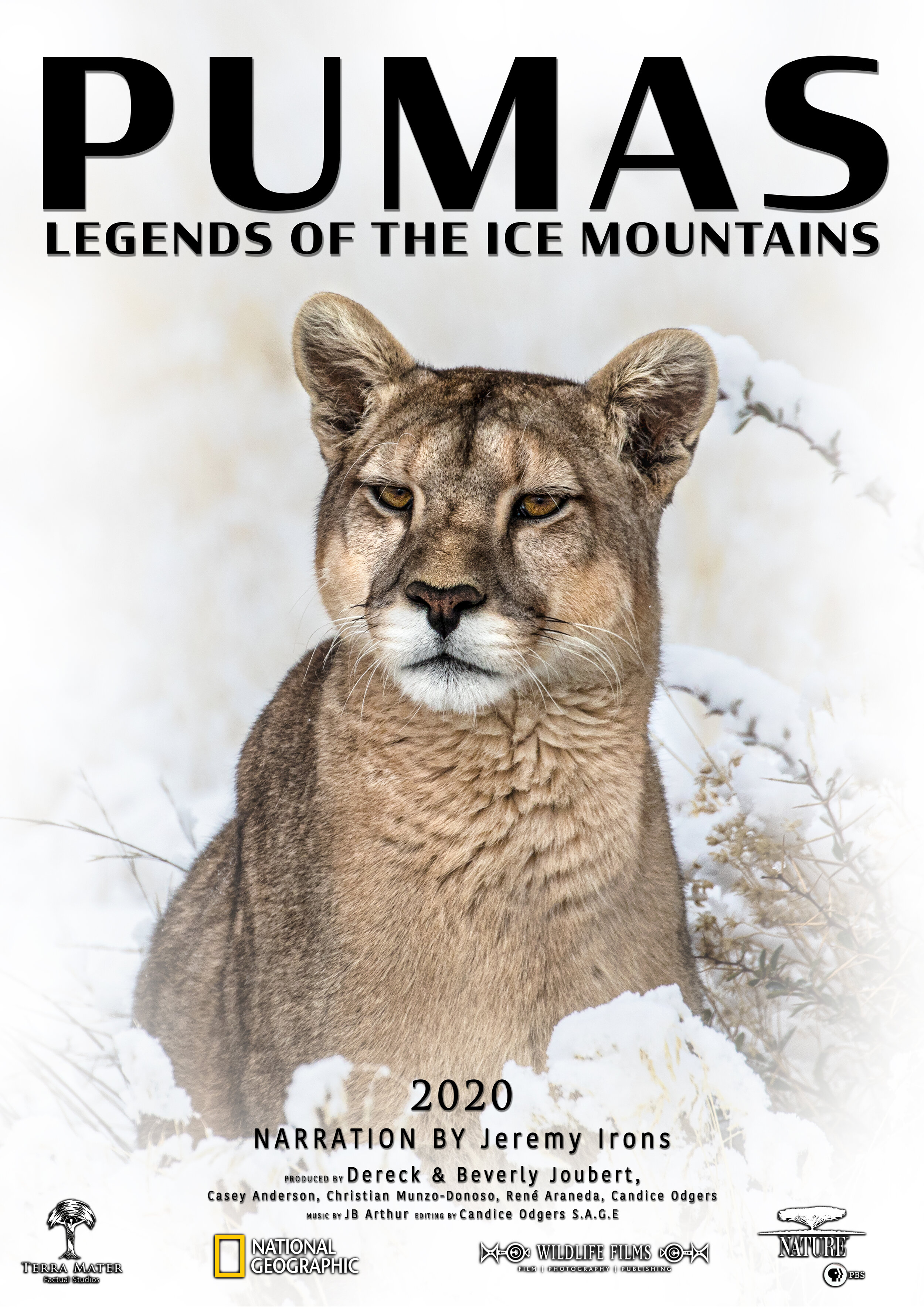Pumas: Legends of the Ice MountainS
There is an extraordinary place near the end of the world, a place where the wind howls and freezes anything that doesn’t use every resource it has to stay alive. Ancient myths talk about this ice mountain and the surrounding land down the spine of the Andes Range, as being controlled by three forces: The Upper realm is where the Condors fly, closer to the Heavens with deep insights, The Middle realm whether the Pumas live, lords of the land, and the Underworld, the realm of the snake, who has great wisdom.
This film is about the lords of the land, the ice mountain, Puma but it is told is a poetic way, reflective, and observational through the eyes of the Condor.
Our film begins in the snow, as a Puma mother attends to her kittens in the shadow of Torres del Paine in Chile. Her name is Solitario, her spotted female cub is the beautiful girl, La Bella Casadora and Part I of our tale begins. Nacimiento: “Birth.” We follow Solitario through the difficulties of early motherhood as she develops techniques to outsmart the guanaco herds and avoid conflict with other pumas in the area.
Some of the most spectacular scenery is the backdrop to amazing hunting and family behavior with these cats.
But tragedy strikes and she is isolated and caught in an avalanche, the cubs stranded and left to their own survival. But that is what happens in this Middle realm, in the harshest place on the planet.
The odds of cubs this age surviving is remote. But…
Part II, el Renacimiento, Rebirth, starts with a strange cat wandering the hilltops. She is strange but no stranger to the area from the way she moves around, swimming the river, crossing places that only a cat with experience could know. She is young, vibrant, a little clumsy for a puma, and her immediately hunting tactics leave a lot to be desired. She fails spectacularly. Most notably, she doesn’t detect a young male who is stalking her until nearly too late. But she also seems to have knowledge of where the guanacos go to breed and fight and give birth. She is the beautiful Casadora, who somehow survived a summer and made it back without her siblings to Solitario’s valley.
She is the bloodline of these mountains and lakes. She is the future of pumas in Torres del Paine…
Our film, a two-part journey into one of the most beautiful places on earth, through two seasons, through ice storms, frozen lakes, and melting rivers, follows two generations of hunting lions, these pumas, these lords of the ice mountain.
Filmed over 3 years.
Produced by Dereck and Beverly Joubert, Casey Anderson, Rene Araneda, Christian Munoz.
Edited by Candice Odgers
Music J.B Arthur
A Wildlife Films Production
Jade Eyed Leopard
She is small. A toto, Swahili for small. But this is not her most striking feature. As she turns her gaze on you, you will take a breath, because she has the brightest aquamarine eyes, and this is her story. She was born under a safari camp tent in the Masai Mara in Kenya. Her mother, Fig is the most attentive and graceful mothers teaching Toto every day but allowing her to make mistakes. She learns that when she grows up, she’ll also be able to kill a large gazelle but practices on a hare. She has something in her that drives her to experiment. If it moves, it’s fair game…until a porcupine calls her bluff.
Through the film, that covers her life over three years, she remains a small leopard and we can see the building blocks locking into place, one lesson learned sticks then another and finally, Toto is ready to make the transition to adulthood. Her mother, Fig, grooms her as a cub, plays with her all the way through this journey and today, Fig and Toto, share adjoining territories in two valleys in one of the most prey rich places on the planet. They play through an entire wildebeest migration into the dry period of less prey, and they play through that as well. Even at the age of 3 years old, already courting, they meet and play. There have been few leopard stories like this told before where the character of an extraordinary cat is so evident.
The film is another view into the world of big cats unveiled by Dereck and Beverly Joubert, National Geographic conservationists, filmmakers and explorers, shot on location in pristine 4K and often memorizing ultra high speed, with seldom before seen thermal night vision.

